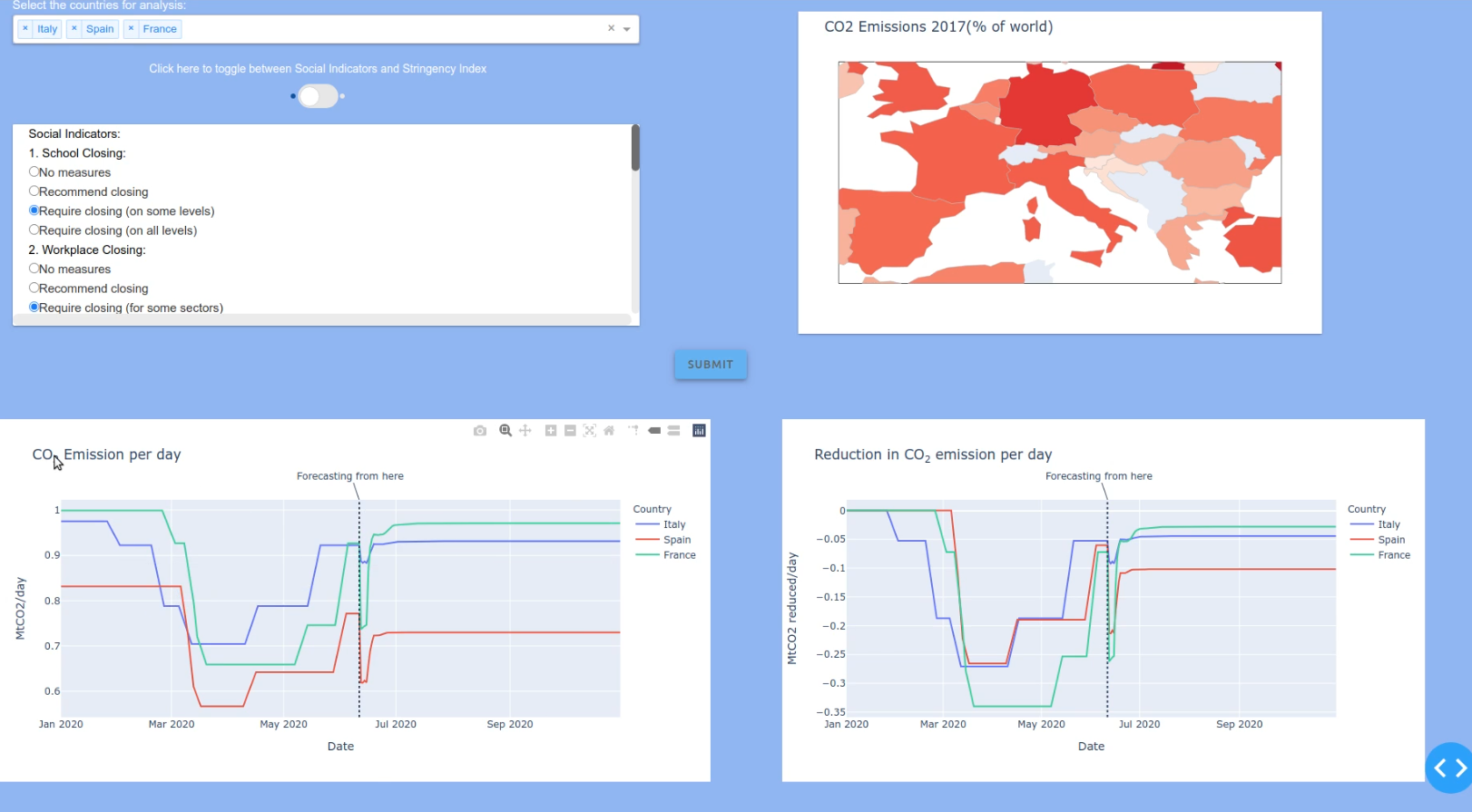PredCarbon
Sustaining Reduction in Carbon Emissions Based on Policy Decisions post COVID-19 Crisis
The COVID-19 crisis has changed the dynamics of the world as we know it. As the infections started increasing substantially across the world from late February 2020, the governments took measures to curb the spread of the virus. To ensure that the number of infected people do not exceed the capacity of the medical facilities, a number of governments issued advisories for the people to stay at home, and imposed lockdowns, to varying degrees. The lockdown made a significant impact, as international trade and industrial activities were greatly reduced. These measures subsequently led to a marked drop in the greenhouse emissions from those countries. However, a few countries took alternative approaches to total lockdown. Sweden, for example, did not shut down the country, but issued guidelines to maintain social distancing. Therefore, it is possible that Sweden might have seen a lower drop in emissions as compared to the countries under total lockdown. Furthermore, the decrease in emissions in locked-down countries is pre- dicted to be short-lived, as the emissions are expected to rise again as the situation moves towards normalcy, as it has happened historically. The main objective of this project is to analyze the effects of the governmental policy decisions during the COVID-19 crisis on the CO2 emissions in different countries. Among the green- house gases, we specifically have chosen to focus on carbon dioxide emissions, as they are a major contributor to the greenhouse emissions. We want to investigate the impact of various confinement strategies on emissions by building a model which predicts the CO2 emissions based on those measures. With the result of our model, we plan to experiment with different confinement stringencies, observing the resulting emissions in order to determine the influence of various poli- cies on CO2 emissions. Based on these findings we hope to derive useful combinations of policies that can lead to improvement towards reducing greenhouse gas emissions effectively.

The complete source code is available here.